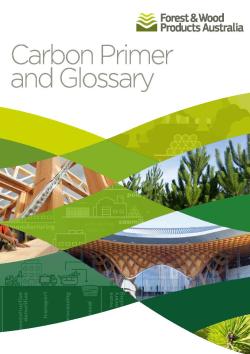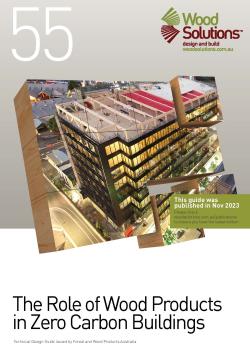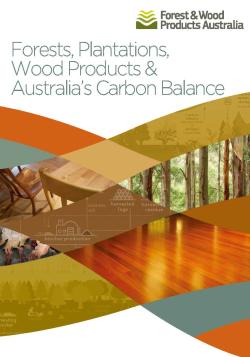In a bid to combat climate change and achieve emission reduction targets, the Australian Government set ambitious goals, legislating a 43% reduction in greenhouse gas emissions by 2030 and net-zero emissions by 2050. Recognising the critical role of every industry in this effort, the forestry and wood products sector emerges as a key player. Forests, integral to the global carbon cycle, function as vital carbon sinks, offsetting around 3.5% of Australia's greenhouse gas emissions between 2011-2016. Despite emitting fossil-based greenhouse gases in their processes, the sector's positive contribution underscores its potential to assist partners in meeting legislative and industry targets.
--

As the focus on reducing operational carbon shifts to embodied carbon emissions, estimated to rise to 85% of Australia's built environment by 2050, the forest and wood products industry stands at the forefront of sustainable solutions. With timber and wood products storing carbon and serving as low-emission materials, the sector plays a crucial role in achieving a 'net-zero' built environment.
Embracing innovation and investment in low carbon, circular building solutions, and supporting transparent, healthy, low-embodied carbon products are key priorities. The Australian Government's recent $300 million program, aimed at encouraging mass timber construction, reflects a significant step towards realising these objectives.
Forest & Wood Products Australia (FWPA) provides the industry with essential knowledge and guidance, empowering them to actively contribute to the ongoing carbon and sustainability dialogue and identify future opportunities for growth and focus via a new three-part report series.
The third and final installation in the carbon series by FWPA is a WoodSolutions Technical Design Guide that serves as a valuable resource for design professionals who aim to incorporate sustainable materials. The guide offers valuable insights into the potential of timber and wood products in Australia's construction industry and specifically addresses the contribution of wood products to zero-carbon buildings.
This new guide aims to provide high-level guidance on diverse topics related to the built environment, including carbon in wood products, biogenic and fossil carbon, embodied greenhouse gas emissions in buildings, and designing for net zero. It also covers embodied carbon policies, green building frameworks, and tools and emphasises the importance of reducing embodied emissions in materials and construction as a crucial step in decarbonising Australia's built environment.
The commentary on embodied carbon spans various stages of the building life cycle, explaining its significance, measurement, and the value of considering whole-of-life carbon in design decisions. This provides context on the global carbon cycle, sustainable forest management, and the distinction between biogenic and fossil carbon, aiding decisions regarding bio-based and fossil-based building materials.
Highlighting the ability of wood products to store carbon for extended periods, both in the built environment and landfill, this guide underscores the importance of life cycle assessments (LCAs) and environmental product declarations. It discusses accounting for biogenic carbon during use and at the end of life, along with approaches to biogenic carbon in green building frameworks in Australia and New Zealand.
Various design options for reducing embodied carbon throughout a building's life cycle are surveyed, including pathways to carbon-zero design, the potential of engineered timber, lightweighting, and end-of-life options for timber building components. The guide concludes that strategic design using wood products in structural systems can decrease fossil fuel use and greenhouse gas emissions. Additionally, it briefly explores carbon-reduction opportunities through digital fabrication and modular construction.
This resource summarises Australia's embodied carbon policies, frameworks, green building certifications, and tools. Three recent Australian case studies interspersed throughout illustrate key topics, showcasing how wood products can contribute significantly to the shift towards zero-carbon buildings.
Download the three-part series now.



